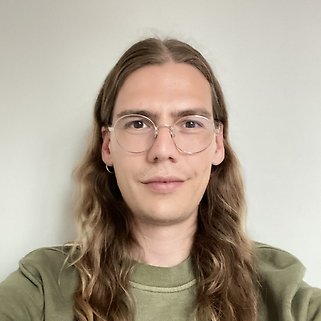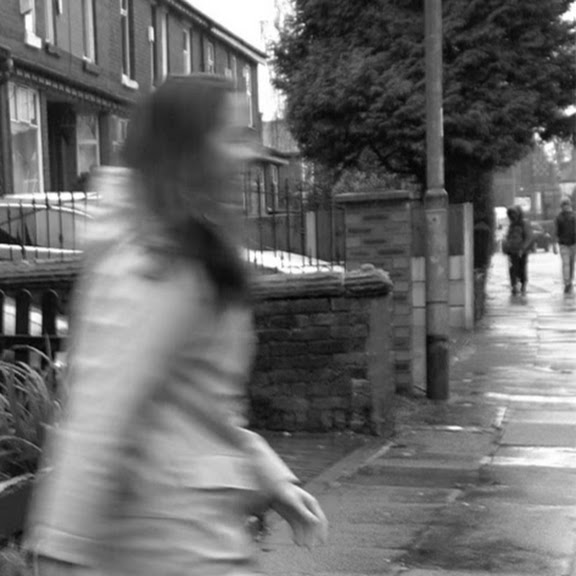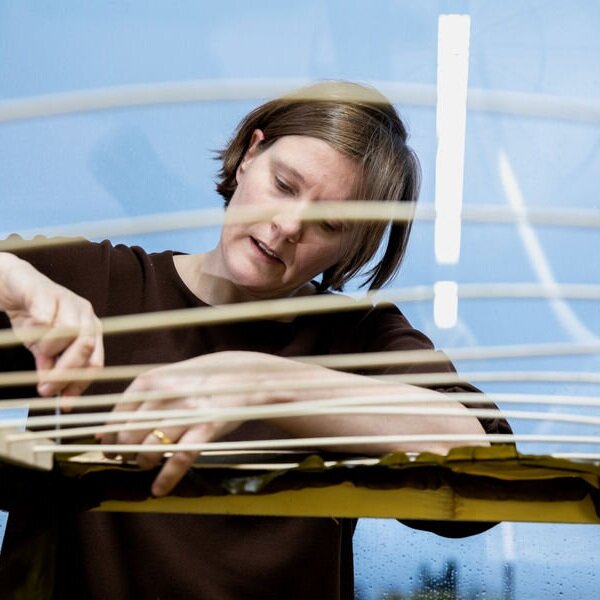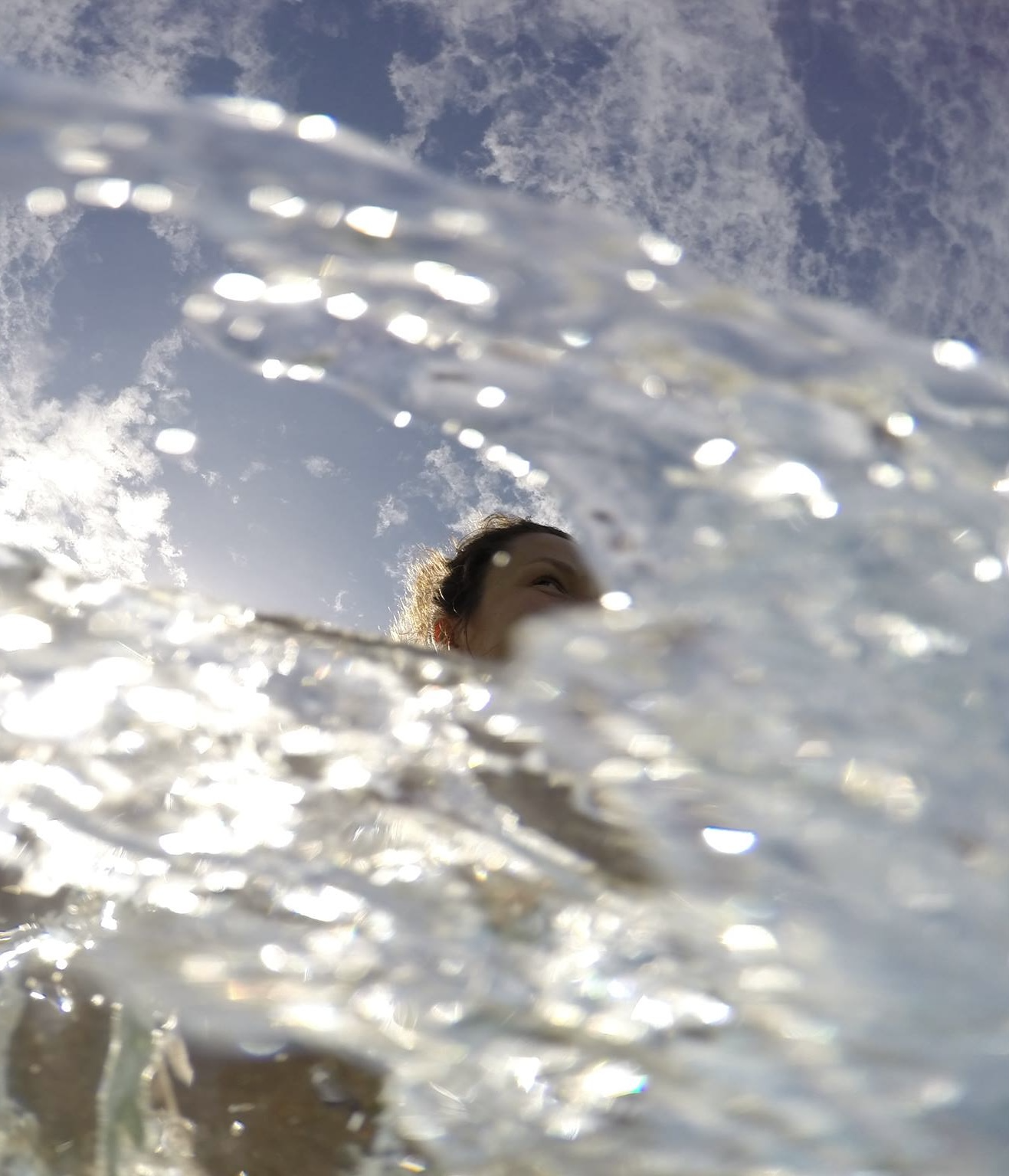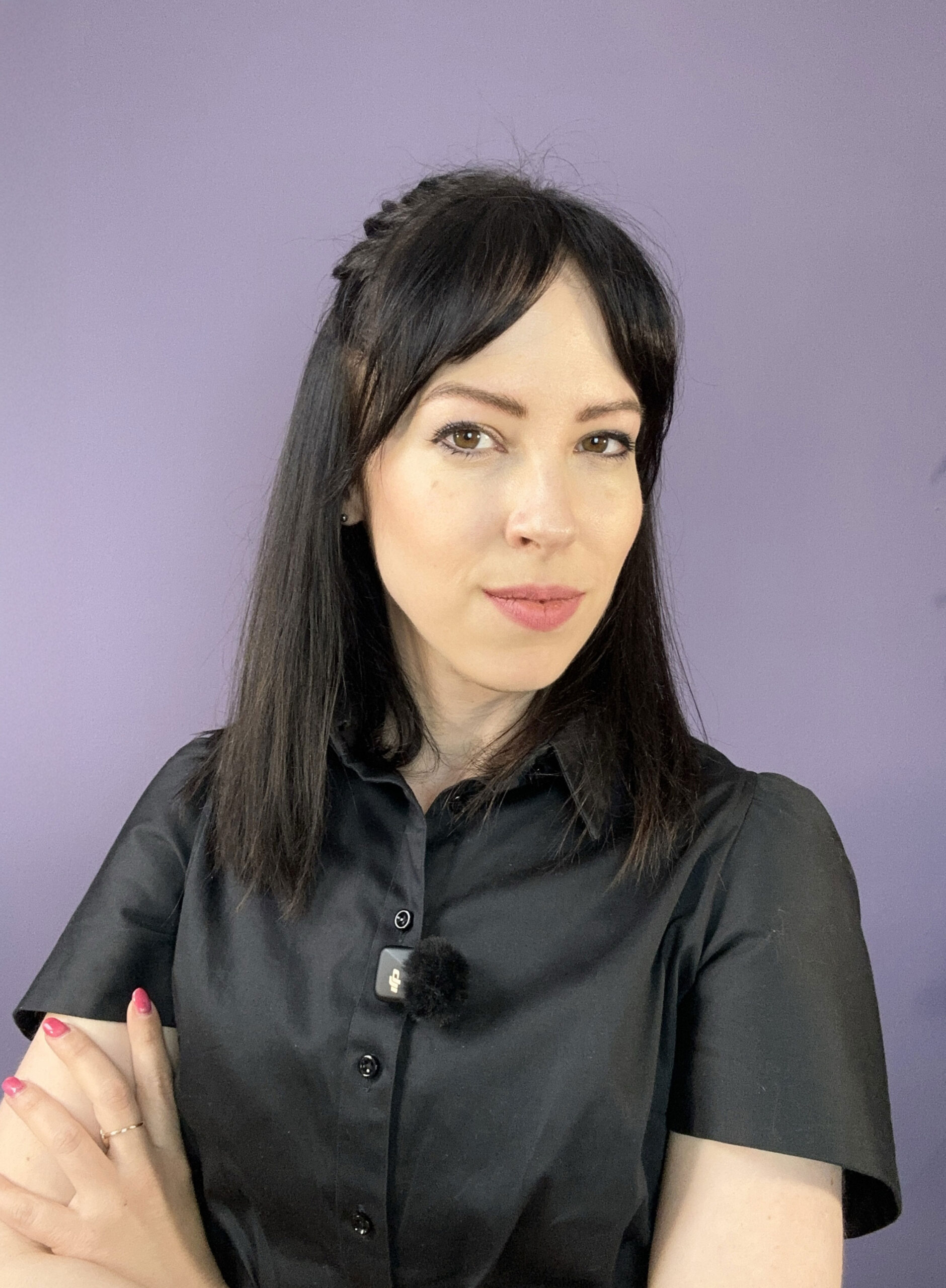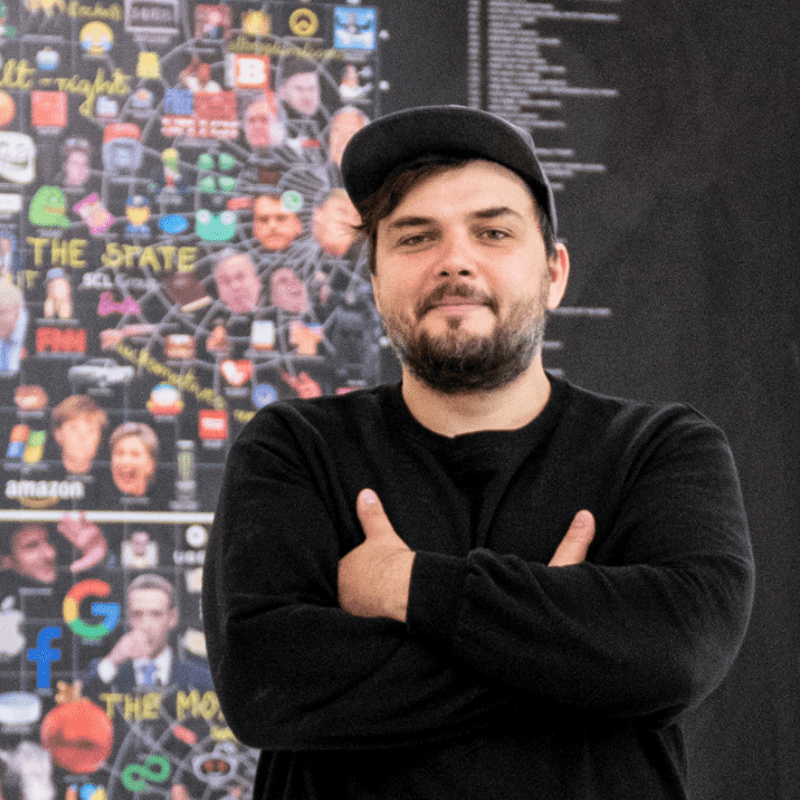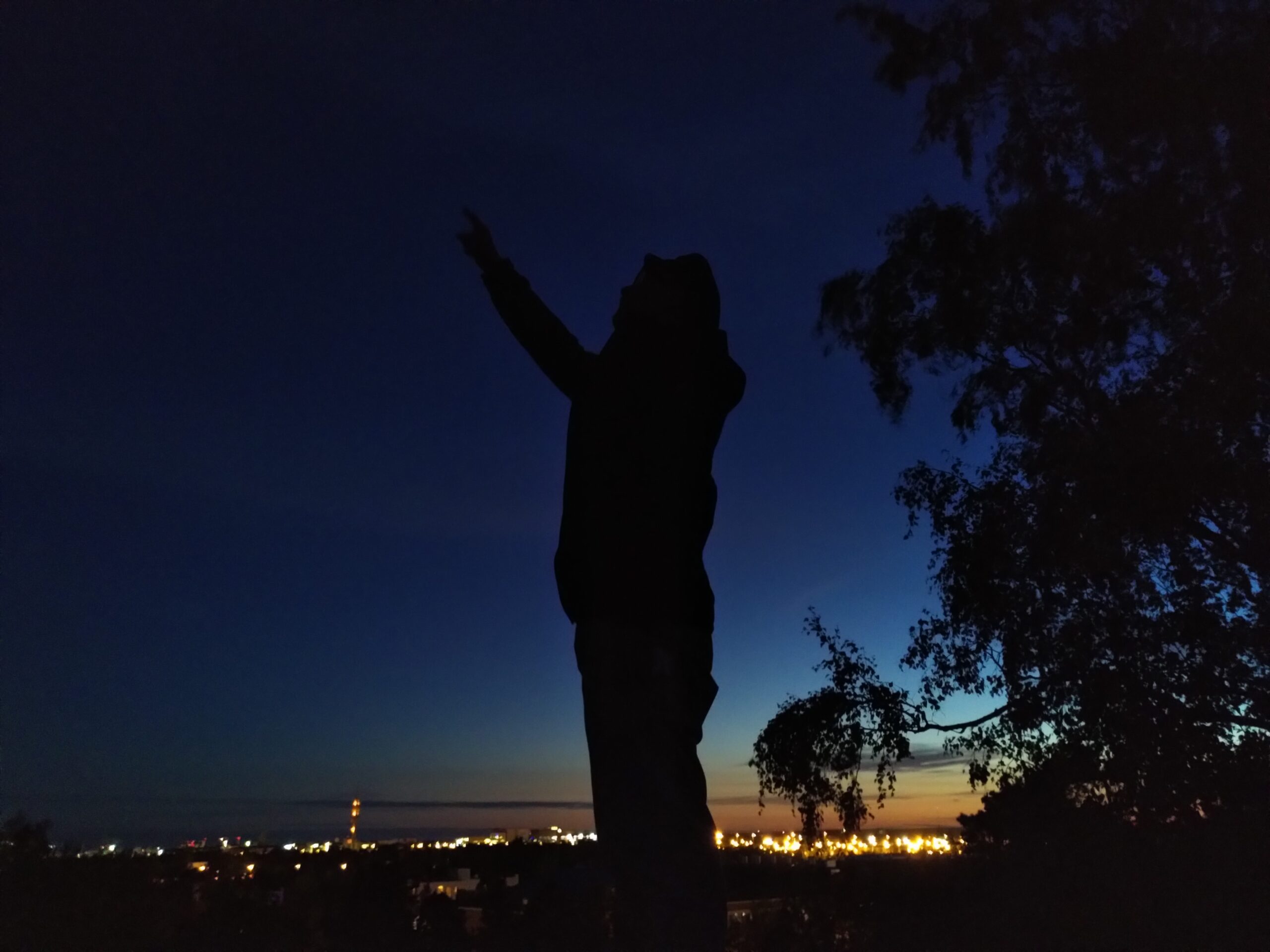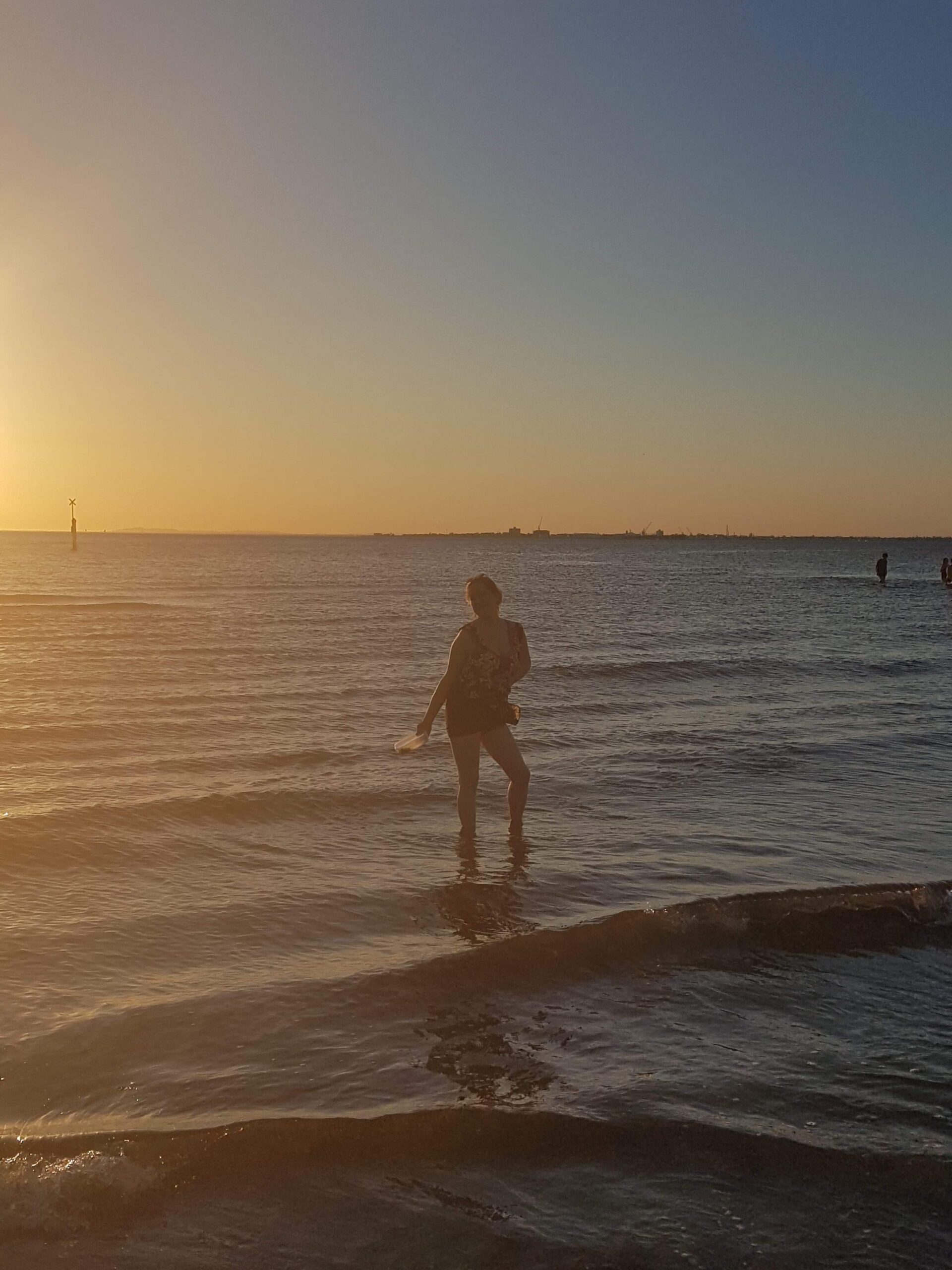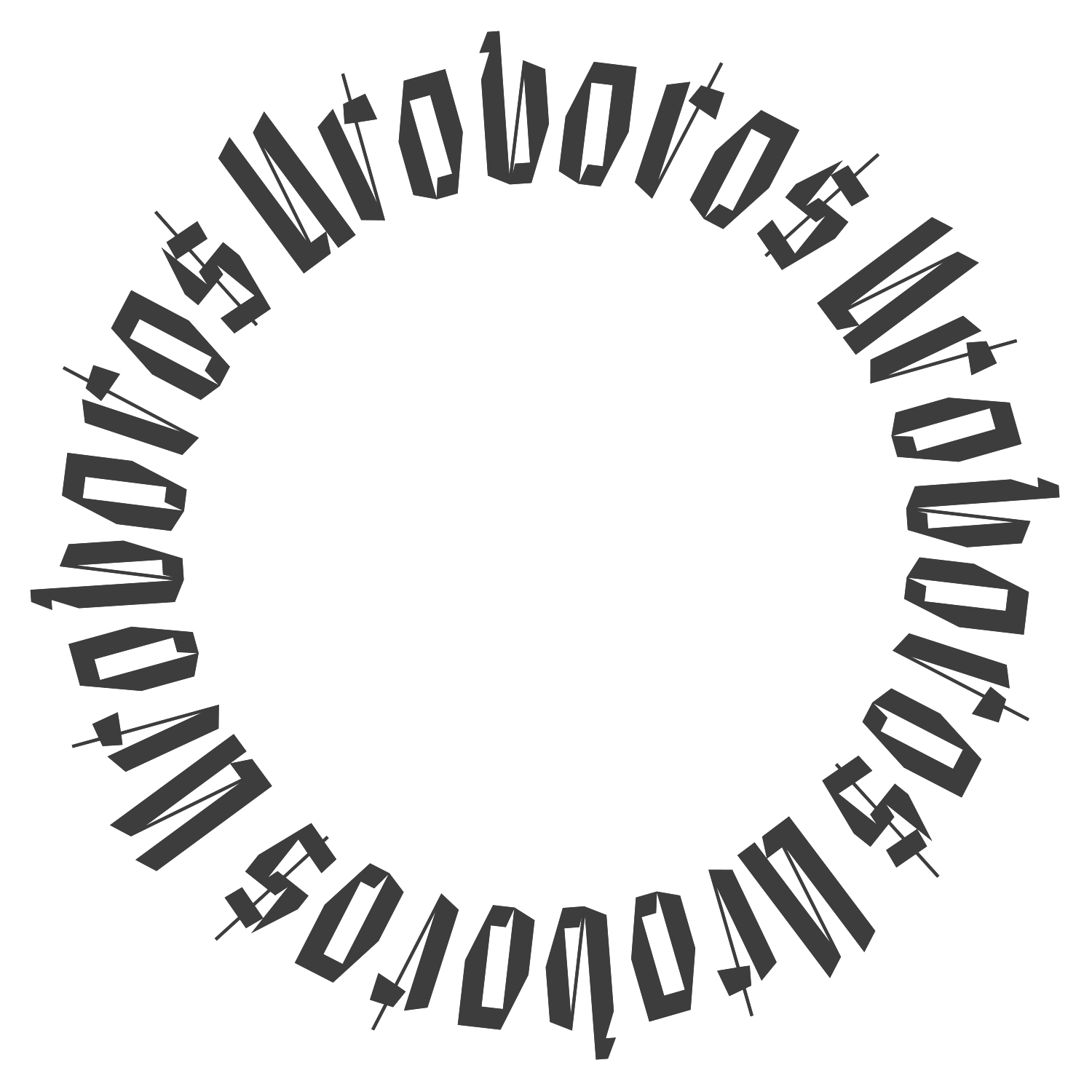
Living-with Feral Ecologies
Living-with Feral Ecologies is a one-day festival exploring feral ways of knowing, caring and relating that shape the flow of life and death in more-than-human ecosystems.

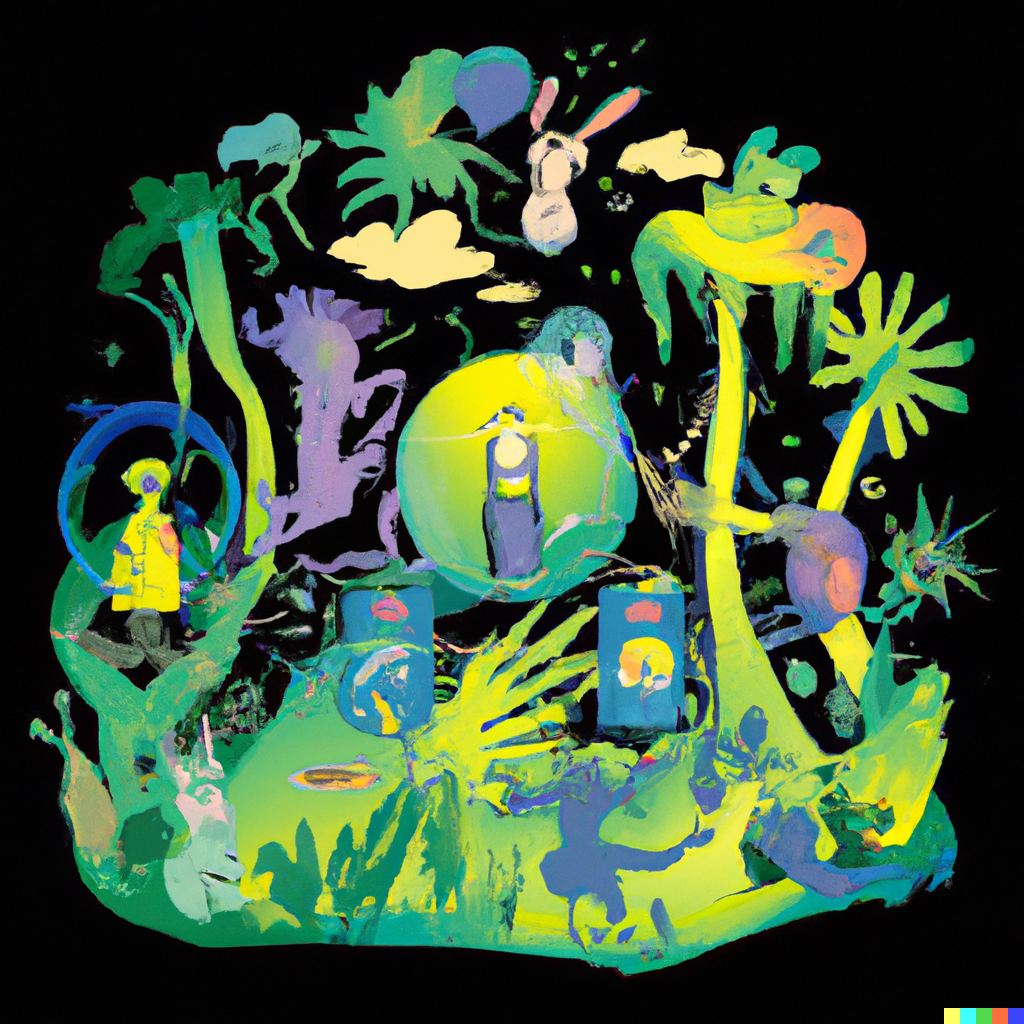
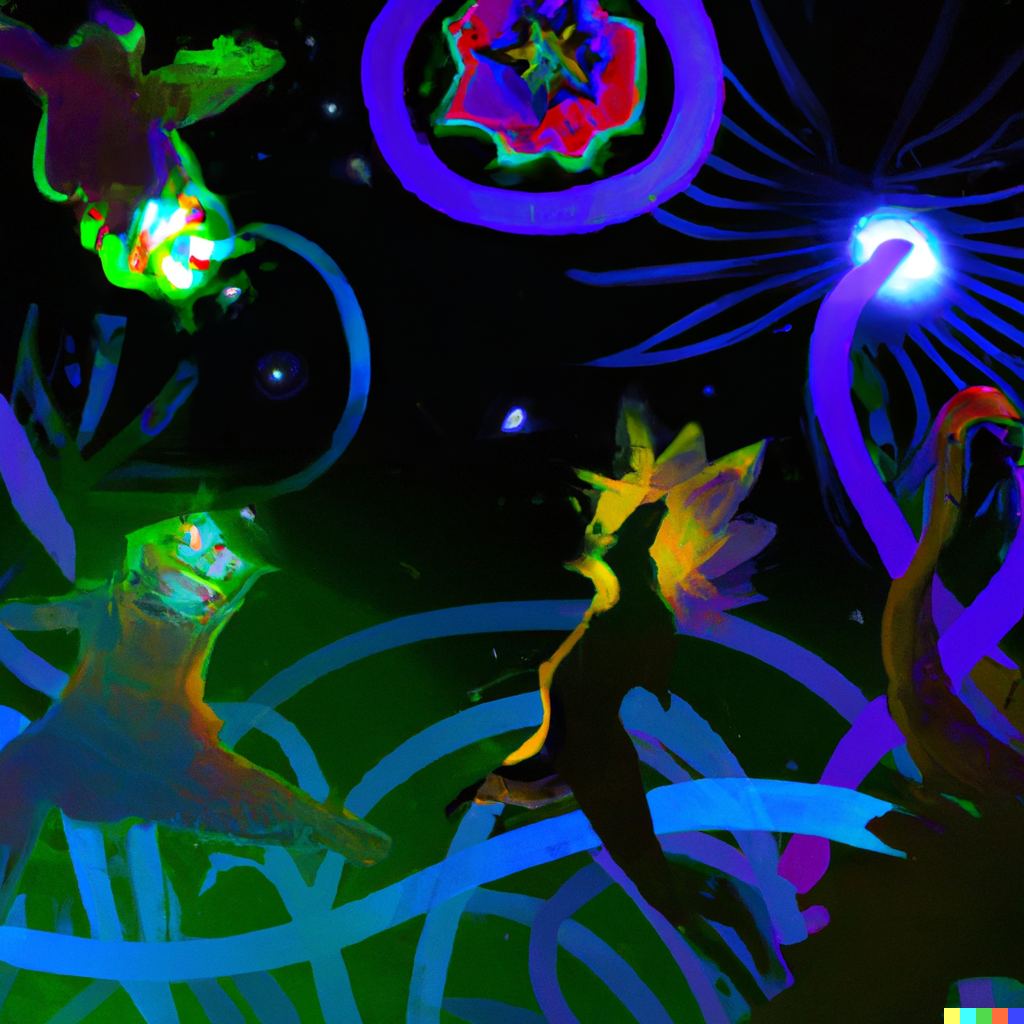
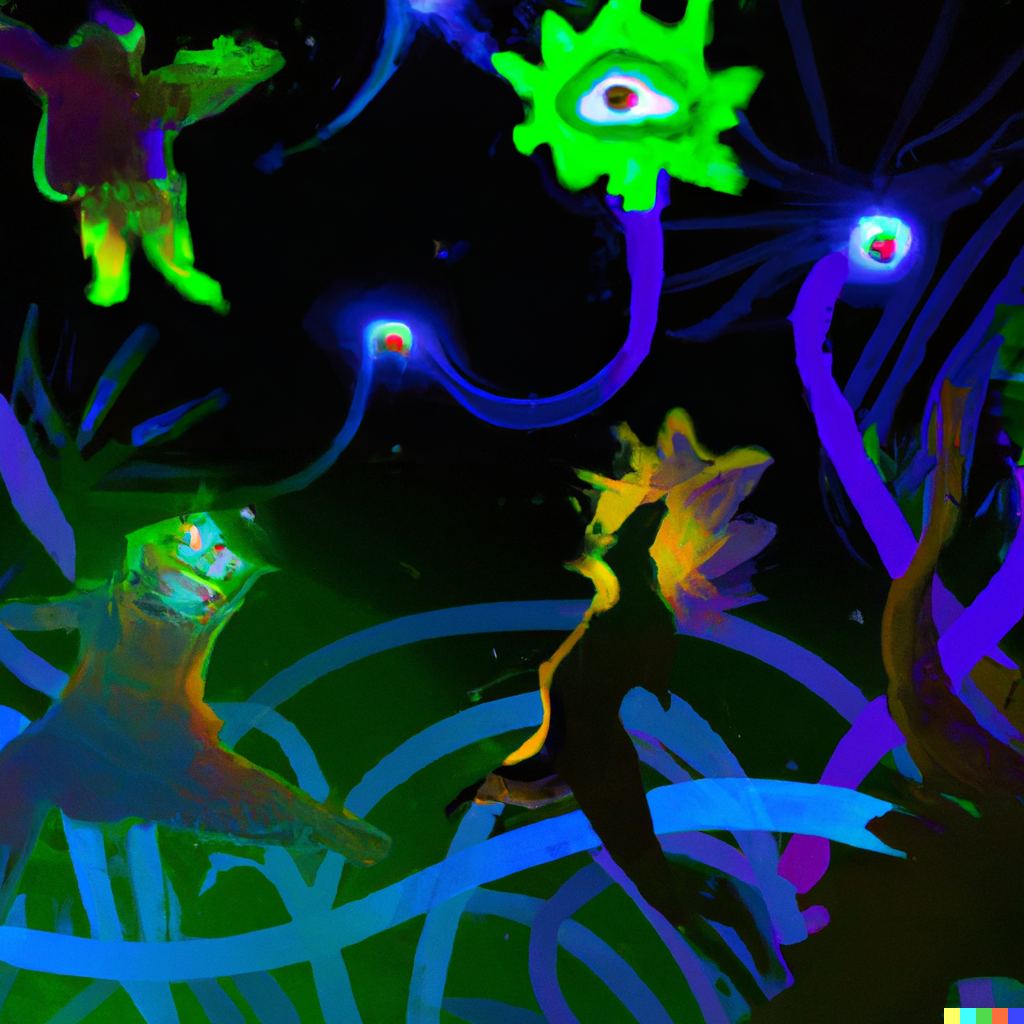
The festival explores feral ways – open-ended, multisensory, spontaneous, beyond human control – in the context of everyday practices, rituals, and relations emerging around the encounters of human and other-than-human life. An international group of art and design researchers will present 20 experimental works ranging from interactive light installations inviting participants to walks with the heartbeats of various animals, to co-creative explorations of human-AI relationships through the medium of sourdough.
The festival is situated in the green and creatures-rich environment of the Lapinlanhti park in Helsinki (Finland) and offers a 12-hour long program of co-creative outdoor activities happening both during the day and at night. After dark, outdoor lights in the venue and the whole Lapinlahti surrounding will be switched off for a proper nocturnal experience🌙🌙🌙. Events such as nocturnal walks, dérives (drifts), rowing trips with algae creatures, multispecies cabinets of curiosities, soil sensing workshops, open-air cinema, multispecies karaoke, and other experimental engagements are accessible for free, to humans and other-than humans from all walks of life (dogs & kids are especially welcome).
Participants are invited to spend the whole day and evening or attend only selected parts of the programme. Most events run continually throughout the whole festival duration, some have a timed schedule (no pre-registration is needed). The full program is available below.
The festival is organised within the Uroboros Loops and the Helsinki Design Week 2023 programmes, as a collaboration of creative practitioners and researchers from the Uroboros Collective and Aalto University’s Department of Design (Nodus, Encore, Inuse research groups).
Event spacetime: September 16th 2023, 11am – 11pm at Lapinlahden Lähde outdoors green yard, Lapinlahdenpolku 8, 00180, Helsinki
Curators: Markéta Dolejšová (marketa.dolejsova@aalto.fi) and Gloria Lauterbach (gloria.lauterbach@aalto.fi)
🧠 🌱 Visitor tips: Please bring an umbrella and/or rain-proof clothes in case of bad weather. If you plan to attend the nocturnal activities, consider bringing a torch or other light source of your choice. There are several coffee shops around the area open during the day but you might bring a snack if you like to snack at night. Toilets and drinkable tap water will be available inside the Lapinlahden Lähde building throughout the event.
Festival program
I. Events happening throughout the festival DURATION:
Cabinet of Feral Data Curiosities 🌲🐺🧵
By Open Forest Collective (Andrea Botero, Markéta Dolejšová, Jaz Hee-jeong Choi, Chewie)
The installation presents our ongoing investigation of feral ways of knowing, being, and living-with diverse more-than-human ecologies. On display are feral data artifacts such as woven sashes, multispecies tattoos, short dérive films, and an eel trap capturing environmental knowledge and cosmologies in various more-than-human habitats including Colombian chagras, Bohemian forest, Croatian wetlands, and the Gunditjmara Country. Participants are invited to spend time with the artifacts and delve into the stories – of feral relationships and care as well as power and structural inequalities – that they weave together. A short talk by the Open Forest Collective followed by a participatory dérive inviting participants to drift with & as the Lapinlahti’s more-than-human ecologies is scheduled for 17:00 (see SCHEDULED EVENTS section below).
Multispecies Research Station 🐙🍄🌿
By Children of the Anthropocene
Welcome to visit our mobile Natureculture Research Station! The Children of the Anthropocene research project focuses on environmental atmospheres and emerging forms of multispecies collaboration. Taking the Station (recognizable from its mushroom-shaped umbrella) as our point of departure, we invite visitors to engage in pop-up research experiments, such as multispecies storytelling and composing of a Cabinet of Curiosities. Children of the Anthropocene of all age groups are welcome to join. Storytelling sessions are scheduled for 15.00-17.00 and 19.00-21.00 + the research station will be present at the venue for the whole afternoon.
Scaling Perception 🔎🪱🐘
By Anton Poikolainen Rosén
An individual perception exercise that suggests ways to zoom out and zoom in when seeing, smelling, hearing, and touching nature. Visitors can take a brochure with prompts and perform the exercise freely in the Lapinlahti surroundings. There will also be a limited selection of “perception tools” to play with – devices that change, amplify, and distort our human perception. Borrow one and see how it changes what you notice. Each exercise takes 15-30 min and can be performed anytime throughout the festival.
Rowing with Algae Experts 🛶 🌊🌿
By Gloria Lauterbach, Kaisa Roover, Janne Backman, Julia Lohmann, students of the Materials and Living Systems Course (Aalto) & and more sea creatures
Festival visitors can go on a rowing trip with experts on Baltic Sea algae and water microorganisms to discuss speculative multispecies futures and have caring, imaginary conversations while being on the water. Each trip takes 15-30 min, we have three boats available throughout the event – book a trip at the main festival venue, get more details & equipment, go row!
The Good, The Bad and The Algae 🌈👹🌿
By Sonja Repetti
Diurnal event, running from 11 – 19:30 ☀️
Do you know what algae are? Did you know that they can be beautiful? Come along and meet the diverse microalgae of Lapinlahti. You will have a chance to look at living microalgae together with the Helsinki University marine biologist Sonja Repetti who will be present to answer all your questions. You can also make your own algae out of clay.
Experience the Future: Soil Sensing Rings 💍🔮🎶
By Anton Poikolainen Rosén
Experience how it might be to work with soil care in 2040. This interactive installation simulates the use of rings that sense nutrients in the soil and present this data as sound. Do you dare to stick your fingers in the soil and discover what it sounds like? You can participate in an optional interview afterward to contribute to research on the design of future sustainable technologies.
More-than-Human Karaoke 🎤🐕🪩
By Gloria Lauterbach
A video work featuring various more-than-human encounters (without sound). The participants are invited to dub the video works. The produced sing-along will be recorded and mixed with the sounds of Lapinlahti. The performance is a multi-dimensional experiment, including and merging the voices of the karaoke singers, the sounds of the festival location, and the various environments shown in the video installation. The later the night, the feral-er the sounds.
Beacons – More-than-human Lighting 🎃🐳🧚♀️
By Ainu Palmu
Nocturnal event – starting after 19:30
Beacons is an interactive light artwork, which has borrowed its form from beacons that are guiding safe routes on sea. The Beacons work consists of lanterns that are pulsating in the tempo of the heartbeat of some animal. Visitors can decide if they want to see a whale’s heartbeat (about 2 beats per minute) or maybe a crow’s (about 378 bpm) heartbeat. They can also carry the lantern to its place after they have decided on the species they wish to attune to. Together, the lanterns create a living string of heartbeats.
Open Air Cinema – Rocking Guts 🏔🏠💌
By Delphine Rumo
Nocturnal event – starting after 19:30
Open invitation to watch the life of rocks in construction projects while listening to gut microbiotas’ environments captured with stethomicrophones. After noticing your own gut feelings about rocks and development plans in the capital area of Finland, you can write them on a stamped postcard and send them to governmental institutions, associations, and decision-makers responsible for overseeing local construction projects. Sense it, write it, we post it. Each encounter takes about 10 min, starting from 19:30 when the darkness settles.
II. Scheduled events:
12:00 – 12:30 Alusta Pavilion Guided Walk 🐝🌱🐞
By Maiju Suomi
*A satellite event: takes place in the courtyard of the Museum of Finnish Architecture and the Design museum
Alusta pavilion explores the intertwined quality of nature and culture, and searches for ways to care for biodiversity in urban environments. The pavilion functions as a platform for environmental discourse, both on the level of its materiality and multisensory experience, and the different activities which take place there. It comprises a pollinator friendly meadow and structures made with clay in its different forms; unfired and fired brick and rammed earth. The needs of the non-human visitors, different pollinating insects such as bees, bumble-bees and butterflies, were identified together with ecology researchers. Polinator friendly perennial plants together with decaying wood offer nutrition and shelter for insects. The porous clay structures simultaneously form space for humans and allow non-human animals to enter and to inhabit them as they wish.
12:00 – 13:30 Reimagining Human-AI Co-Creation through Encountering the Sourdough 🤖🤲🍞
By Lenka Hámošová
Navigating the realm of human-AI co-creation opens some pressing questions: Can we truly co-create with AI if we can’t articulate the emotional core underpinning our actions? As we acknowledge this chasm between AI and human realities, we must reflect on the ethics of this more-than-human collaboration. Is it fair to involve AI in this co-creative process without attaining a mutual understanding between the human and other-than-human parties involved? Join us for a participatory kneading session where we’ll explore these questions in a hands-on manner, using the tactile and collaborative process of sourdough preparation as our guiding metaphor.
14:00 – 15:00 Dream Ferale 🌙🐺🦋
By Enrique Encinas
Do ecosystems dream of multi-species shifts? or lucidly explore a past extinct? maybe traverse centuries in a week? When visionary visitors join Dream Ferale, their human dreams will resonate with the dreams of Lapinlahti’s other-than-human creatures. They will relate to the feral beings that inhabit the dreams of animals, microbes, or trees so these creatures, alive in the dreamworlds of plants, dogs, or fish, can share shards of Lapinlahti’s dreams.
15.00-17.00 Multispecies Research Station: Storytelling session I 🐙🍄🌿
By Children of the Anthropocene
The Children of the Anthropocene research project focuses on environmental atmospheres and emerging forms of multispecies collaboration. Taking the Station as our point of departure, we invite visitors to engage in pop-up research experiments, such as multispecies storytelling and composing of a Cabinet of Curiosities.
15:30 – 16:30 How to D(A)O Ocean Resilience 🌊🦾🐳
By Michal Kučerák
The ocean, similar to blockchain, thrives on interconnectivity. Over generations, people have exchanged captivating myths about oceans and their creatures, igniting respect, fear, and fascination. Today, in the age of planetary extractivism, we seek narratives that embrace both the mythical and the computational. During this session, we will delve into the blockchain-related concept of DAOWO (Decentralized Autonomous Organization With Others), as envisioned by Rob Myers in 2015: incorporating more-than-human actors that entwine magical thinking, post-extractivism, resilience, and collectivity. Our co-creative practice will be imaginative and hands-on; unveiling diversity of conceptual frameworks, worldbuilding perspectives, and value systems instead of resorting to mere more-than-human technoutopia.
17:00-19:00 Weaving the Feral – A Drift 🌲🐕💨
By Open Forest Collective (Andrea Botero, Markéta Dolejšová, Jaz Hee-jeong Choi, Chewie)
This dérive drift invites participants to join a feral, performative investigation of multispecies relations that shape the Lapinlahti’s more-than-human ecologies. Inspired by the movements and rhythms of local other-than-human creatures, as well as the artistic strategies of dérive (including their flaws), we will drift and co-create feral data together with the local ecologies. We will experiment with various performative sense-making practices and devices, including prompts co-created with the online More-than-Human Dérive portal. The Drift starts at the Weaving the Feral – Cabinet of Curiosities installation spot, with a short introduction into the world of drifting and feral data.
19.00-21.00 Multispecies Research Station: Storytelling session II 🐙🍄🌿
By Children of the Anthropocene
The Children of the Anthropocene research project focuses on environmental atmospheres and emerging forms of multispecies collaboration. Taking the Station as our point of departure, we invite visitors to engage in pop-up research experiments, such as multispecies storytelling and composing of a Cabinet of Curiosities.
20:00 – 23:00 Find me Dream-walking in the Steppes 🫖🌾📚
By Iryna Zamuruieva
Come for the tea ceremony, stay for the reading. I invite you to dream together about the Ukrainian steppe, the main area where Russia’s war on Ukraine is unfolding and causing harm to all the steppe inhabitants. There will be time to be still, to drink Ukrainian herbal tea, to hear about the creatures for whom the steppe is home, to dream up futures full of flourishing.
22:00 – 23:00 Dark Walk 🌚💫🐾
By Satu Aavanranta & Tuukka Perhoniemi
An adventurous walk in the dark with nice and safe multispecies company. On a dark walk, we explore sensing darkness, looking at the stars, having adventures in nature, and getting used to being in the dark. The walk includes a guided embodied experience and an opportunity to explore darkness together.
Gloria Lauterbach
Gloria Lauterbach is a visual artist and postdoctoral researcher at NODUS - Sustainable Design Research Group, Aalto University, Finland. Gloria has a PhD in Arts from Aalto University. As an artistic researcher, Gloria is passionate about dialogical post/humanism, post-anthropocentric theories, materials in cooperation, the more-than-human in human habitation and darkness as an urban restoration force. At best, this research takes place outside, practicing with and considering other/s.
Markéta Dolejšová
Markéta Dolejšová is a practice-based researcher experimenting with co-creative and embodied experiences in multispecies contexts. Her recent focus has been on ferality and feral eco-systems, exploring what relations, intuitions, and ways of knowing can emerge in the liminal spaces between the wild and the domesticated, the familiar and unknown, the serendipitous and intentional. She is also an Assistant Professor at The Academy of Fine Arts in Prague, where she acts as the Head of Doctoral Research Department, and recently finished her postdoctoral research fellowship at Aalto University – School of Arts, Design and Architecture (2020-24). In 2020-22, she worked with the CreaTures – Creative Practices for Transformational Futures project, where she led the Laboratory of Experimental Productions and co-created the CreaTures Framework setting out how creative practices can stimulate action towards socially and ecologically sustainable futures. She co-founded several art & design research initiatives, including the Uroboros festival, the Open Forest Collective, the Feeding Food Futures network, and the HotKarot & OpenSauce.
Ainu Palmu
Ainu Palmu is a lighting designer and light artist. She makes animation, other video content and set design. She graduated as a lighting designer from Tampere Polytechnic in 2000 and from University College London yr. 2008. The first light artworks by her were seen in 2010. Since then she has made light art pieces for festivals and public spaces. A strong presence of drama in her work is parented by the background of her work in stage arts. She uses abstract imagery as well as more factual images and dynamics in between. The works most often have changes in them. The way how one image changes to another is as important as what is seen when the changes are done. Her works dive into the value of beauty. She invites people by the side of the work with flashy and forceful visual initial contact from which, usually, there is a possibility to realize underlying other meanings. In her work, she brings darker sides of life up with tenderness. Her works often require some activity from the part of the viewer. Interconnection between maker and viewer is essential and the pieces sometimes are practically not ready before it is experienced. She can be said to be a visualizer of communication. Her main interests at the moment are inter-species coexistence and how the force of the sea of humans can form the future of earth also better. At the moment she is curating a light art exhibition for birds and insects.
Andrea Botero
Andrea Botero is a designer and researcher exploring technologies, services and media formats for collectives and communities. Through her research work she investigates how collectives come to understand the design spaces available to them and how designers could support more diverse infrastructuring processes around them. Andrea works as a Professor at the School of Arts, Design and Architecture at Aalto University (FI). She is also a conspirator at the design studio Suo&Co and Adjunct Professor at Universidad de Los Andes (COL).
Anton Poikolainen Rosén
Anton Poikolainen Rosén is a researcher and lecturer in Human-Computer Interaction (HCI). He focuses on designing for sustainable futures and the more-than-human world. Anton's thesis investigated how urban farmers use interactive technologies to organise their practice and understand and appreciate the more-than-human world. The thesis also articulates how plants can be seriously considered as stakeholders in design processes. Anton is a postdoctoral researcher at the School of Arts, Design and Architecture, Aalto University, Helsinki, Finland and has a PhD in Informatics from Södertörn University and Umeå University, Sweden.
Chewie
Chewie is a forest guide living and thriving in Central Bohemia, in the protected landscape area Křivoklátsko. Since 2021, Chewie has been a core member of the Open Forest Collective where he contributes to feral explorations of more-than-human ecologies and leads a series of experimental walks in the Křivoklátsko forest. Through his kind guidance, Chewie helps other collective members and contributors to learn about diverse multispecies relationalities and spatiotemporalities of care that make up a forest. As part of the Uroboros Collective, Chewie helps to organise the annual festival, in 2023 with his own program section Chewroboros.
Children of the Anthropocene
Antropseenin lapset (Children of the Anthropocene) is a research group focusing on the atmospheres of young people growing up in the environmental crisis. We examine shifting nature-culture relations in the so-called Anthropocene, and advance attentiveness towards multispecies relations in society. In the project, we carry out ethnographic research and arts-based workshops. We also develop multi-species storytelling methods and produce scientific publications. The research project is funded by Kone Foundation (2022-2025). All the researchers are based in the University of Helsinki, Faculty of Education, and they are: Riikka Hohti, Henrika Ylirisku, Rachel Sinquefield-Kangas, Verneri Valasmo, Varpu Mehto.
Delphine Rumo
Delphine Rumo is a Doctoral Researcher working with the NODUS Sustainable Design Research Group at Aalto University. She is a trained designer and a sustainability researcher exploring the materiality of diverse economies and post-anthropocentric practices. Fascinated by the timing of human-geology economies, she writes about the life of soils and rocks in construction and her encounters with spirited geologies.
Enrique Encinas
Enrique Encinas is a design researcher exploring the patterns and textures formed by (other than)humans and technologies through creative, critical and collaborative practices. He works as Associate Professor in Interaction Design at the Oslo School of Architecture and Design (AHO). They have co-lead projects involving governmental, artistic and educational institutions such as the European Union Policy Lab, the Centre for Contemporary Culture in Barcelona (CCCB) or SpeculativeEDU.
Iryna Zamuruieva
Iryna Zamuruieva makes images, writes, walks, organises, and performs. Across her work, she explores human-environmental relationships through research, photography, curating, collage, and gatherings of all sorts: sensory group walks & counter mapping, street interventions, mourning ceremonies. Most recently she has been writing about her kin-region in Ukraine, working on land, resilience, and climate justice in Scotland; curating Climate Art Labs, an interdisciplinary collaboration exploring the meanings and impacts of climate change in Ukrainian environments; and researching eco-feminist thought in Ukraine. Her writing has been published in the Commons, Open Democracy, and Scottish Left Review amongst others.
Jaz Hee-jeong Choi
Jaz Hee-jeong Choi is an Associate Professor in Civic Interaction Design at the Amsterdam University of Applied Sciences. Their transdisciplinary research and practice situate ‘care’ at the core of transformational encounters in different settings ranging from cities as complex cyberphysical networks to forests as moving creatures. They build on this to explore how radical transformation can materialise care-fully through creative-critical engagements. Their current research, practice, and engagement focus on the dynamics of creative practice as feral care with a particular interest in awe in immersive art.
Julia Lohmann
Julia Lohmann is a Professor of Practice in Contemporary Design. She investigates and critiques the ethical and material value systems underpinning our relationship with flora and fauna. Julia's research interests include critical practice and transition-design, bio materials, collaborative making, museums and residencies, embodied cognition and practice as research. As designer in residence at the Victoria and Albert Museum in 2013, she established the Department of Seaweed, an interdisciplinary community of practice exploring the marine plant's potential as a design material. She holds a PhD in Innovation Design Engineering from the Royal College of Art, London.
Kaisa Roover
Kaisa Roover has been privileged to work on many internationally awarded projects in the audio-visual field for over a decade, before her current studies in Creative Sustainability Masters program at Aalto University. Currently she is working on a thesis that is looking at the case of Finnish Maritime Spatial Planning and how "voiceless", more-than-human stakeholders could be included in the process. Exploring how multispecies sustainability and justice can be effectively embedded in design and planning practice, through critical and experiential foresight and storytelling.
Lenka Hámošová
Lenka Hámošová is an interdisciplinary artist, designer, and researcher working at the intersection of AI, creativity, and embodied human experience. With a background in visual communication and over 15 years of creative practice, she explores how we can reclaim agency, intuition, and meaning in the age of intelligent tools.
Her ongoing PhD research investigates collaborative human–AI creation, and she regularly shares her findings through talks, workshops, and experimental educational formats. Lenka is the founder of Creative AI Workflows, a methodology and platform helping people develop more conscious and grounded relationships with generative technologies. She also created the Creative AI Cards — a tactile system for mapping AI tools by input/output modalities and creative potential.
She has lectured at FAMU, UMPRUM, and Prague City University, collaborated with teams like Google AI Ethics and ČSOB, and exhibited work at venues such as DOX and the AI Art Gallery. In 2023, she initiated Creative AI Meetups in Prague to foster a hybrid community of technologists and creatives exploring the future of co-creation with machines.
Maiju Suomi
Maiju Suomi is an architect (MSc), a doctoral researcher and an educator at Aalto University working in the field of environmental architecture. In her practice and teaching she focuses on bridging nature and culture through the creation of multisensory spatial experiences. Her projects include e.g. KKYC Youth Centre, Phnom Penh, Cambodia designed with participatory methods (Komitu Architects) and Alusta Pavilion for Multispecies Encounters (Suomi/Koivisto Architects). In her practice-led research she explores how moving beyond a human-exceptionalist world-view affects architectural practice and aesthetics.
Michal Kučerák
Michal Kučerák is a researcher, lecturer, and curator with a particular emphasis on art mediation and digital projects. Presently, he is actively engaged with a contemporary art foundation TBA21, where he contributes to their digital team, specializing in digital research and projects, specifically Ocean-Archive.org (TBA21–Academy). Additionally, he is pursuing his PhD studies at the Faculty of Fine Arts, University of Technology in Brno. Michal initiated a research exhibition project called #DATAMAZE (DOX Centre for Contemporary Art, 2018-2022), which revolves around enhancing digital and data literacy through the medium of contemporary art and design. He co-organizes Uroboros festival focused on socially engaged design and artistic practice. You can find him in his studio at Petrohradská kolektiv (Prague, CZ).
Open Forest Collective
Open Forest Collective is a multi-disciplinary, multi-species group of creative practitioners and researchers experimenting with feral approaches to engaging with forests and forest data. The Collective's creative activities – experimental walking, drifting, storytelling, and co-creation of feral forest datasets – bring together scientists, artists, citizens, policymakers, Indigenous forest guardians as well as dogs and trees in experiential exchange of their diverse forest experiences and knowledge. The work is distributed across different locations, including (what is known today as) Finland, Australia, the Czech Republic, and Colombia. Current members of the Collective include Andrea Botero, Markéta Dolejšová, Jaz Hee-jeong Choi and Chewie.
Tuukka Perhoniemi
Tuukka Perhoniemi is everybody’s favourite astrophilosopher. During nighttime, he explores the ambient darkness and tries to understand the universe. During daytime, he gives courses in Astronomical Association Ursa, writes and translates books, and tries to understand other living beings.
Satu Aavanranta
Satu Aavanranta is about to graduate from the Creative Sustainability master's degree programme at Aalto University. For her thesis, within the NorDark project, she researched the sustainability problem of artificial light pollution by focusing on the atmospheric phenomena of darkness, and especially the value of darkness for humans and multispecies. Recently, Satu has worked as an intern at the sustainable development team at the Prime Minister's Office and as a research assistant at NODUS Sustainable Design Research Group at Aalto University.
Sonja Repetti
Sonja Repetti (she/her) is an interdisciplinary doctoral researcher based at the University of Helsinki and Tvärminne Zoological Station, Finland, with a passion for protists. She completed her Bachelor of Science (Honours) at the University of Melbourne in 2019, with a thesis focusing on genome dynamics of green algae. In 2022, she submitted her thesis about the effect of nutrient availability on phytoplankton trait distribution and competition outcomes along a salinity gradient for the degree of Master of Science (Environmental Change and Global Sustainability) at the University of Helsinki. She began her doctoral studies in 2023, focusing on the capacity of algae to respond and adapt to environmental change, as well as increasing public understanding and appreciation of algae. She is a doctoral researcher member of the Helsinki Institute of Sustainability Science HELSUS.




